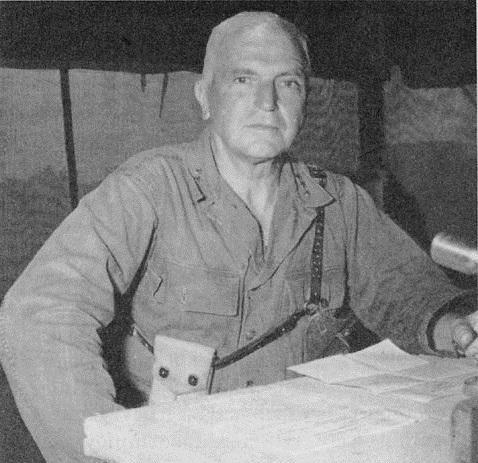During World War II, the U.S. military sacrificed the largest general in the Pacific Theater. He was: General Buckner
Buckner, a well-known American general who graduated from the United States Military Academy at West Point in 1908, served twice in the Philippines and fought in World War I.
He was a senior U.S. general in the Pacific Theater. I believe that friends who understand the history of the Pacific War should know that General Buckner is still quite famous and has made great contributions to the US military in the Pacific War.

And just like such a famous general, on June 18, 1945, almost after the Battle of Okinawa, General Buckner personally came to the front line to supervise the battle for the final victory of the battle, and when he walked to the vicinity of the Eighth Marine Regiment, suddenly a shell of the Japanese army flew in, and General Buckner fell on the spot, and the shrapnel and sharp pieces of rubble of the shell hit him in the head and died on the spot.
Incredibly, the battle was almost over, and a single Japanese shell killed the commander of the U.S. Lieutenant General's Army Group. This may not even have been thought of by the Japanese army itself. Buckner alone was also the highest-ranking and highest-ranking general killed in the entire Pacific War. His seat was then replaced by Rear Admiral Geiger, commander of the Third Marine Corps.
On June 22, 1945, the U.S. army broke through the last line of defense of the Japanese army, attacked Arasaki, the southernmost tip of Okinawa, and divided the remnants of the Japanese army into three parts, the Japanese army knew that the end was coming, and in the tunnel, the hygienists injected the wounded with a large dose of morphine, so that they died peacefully. Geiger optimistically announced that he had eliminated organized Japanese resistance on the island.
At four o'clock in the morning of June 23, 1945, Ushijima knew that the American army was about to occupy the Mowenren Tunnel where he was located, took off his military uniform, changed into a kimono, toasted with the staff officers around him, drank the last trick drink, and then committed suicide by caesarean section. His chief of staff followed him to commit suicide by caesarean section, and some officers committed suicide en masse. At this point, the organized resistance of the Japanese army subsided, while the resistance of the scattered Japanese army continued, and the work of eliminating the remnants of the Japanese army continued until the end of June 1945, when Nimitz officially declared the end of the Battle of Okinawa.
By 19 July 1954, By a special decree of Parliament, Bucknell was posthumously promoted to general of the Army. General Buckner is buried in the family cemetery at Frankfurt Cemetery in Kentucky.